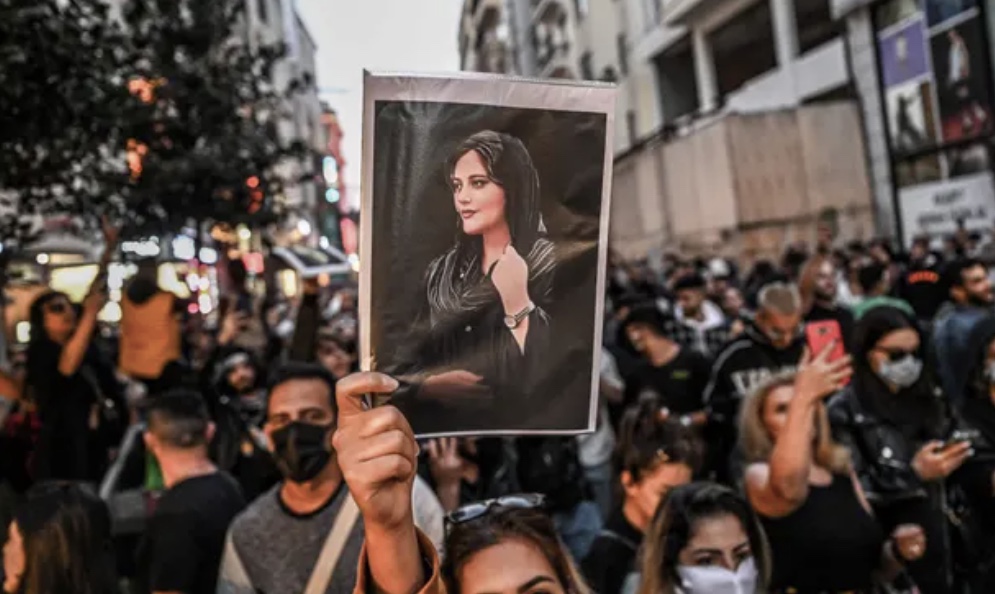The oppression and submission of women and young girls has been occurring for the past 44 years in Iran. A more recent development, however, is women facing subjugation for refusing to wear their compulsory hijabs. Since Sep. 16, 2022, both men and women in Iran have been protesting for women’s rights following the tragic death of 22-year-old Mahsa Amini at the hands of morality police due to Amini not wearing a hijab and for wearing skinny jeans. In protest, women turned to public demonstrations of retaliation that gained attention from political and religious leaders such as cutting their hair and burning their hijabs as a means to reject social norms. As a result of the lack of compassion from police and government intervention, the ‘Woman, Life, Freedom’ Movement has started a new revolution in Iran. This movement has taken social media by storm with it better known as #MahsaAmini and #Woman_Life_Freedom online. Now, people from all over the world are able to show their support virtually.
In a seminar hosted by Siena College on the protests in Iran, the impact of the unstable and toxic government was described by one of the speakers who recalled a story from her childhood. Her firsthand experience of the toxicity of the Iranian government was first noted when she was a child and was sent to the principal’s office for wearing red shoes. The speaker also stated how she and her family had to flee the country after her father was wrongly accused of a crime. Even after living in the United States, the Iranian government still had its hold on her life when her mother was unable to sign her marriage certificate due to her being a woman.
The death of Amini not only sparked rebellion against dress codes, but also for change regarding economic and political reforms. Nevertheless, women are beginning to protest against the compulsory wearing of a hijab as it transformed from a religious symbol to a political symbol prior to Amini’s unfortunate death. This is evident throughout history, more specifically in 1979 when Ayatollah Khomeini announced the compulsory hijab in the workplace. In response to this gender discriminatory rule, “Iranian women took to the streets to protest and were violently attacked by pro-Revolution forces that would later become the morality police that arrested Mahsa Amini”, according to Carnegie Endowment for International Peace.
Even outside places of religion or worship, the rules for hijabs are pervasive. In the Islamic Republic of Iran, female athletes are obliged to wear a compulsory hijab. If these guidelines are not followed, the republic will threaten the families of the athletes, and even have the power to ban them from re-entering the country, thus forcing them to immigrate. Instances like these happened to Elnaz Rekabi, an Iranian climbing athlete. Rekabi refused the mandatory dress code, which incited protests across Iran that named Rekabi a hero. It can be inferred that the rejection of the compulsory wearing of the headscarf traces back to the refusal of oppression and not necessarily the rejection of Islam or Islamic values. As these issues become increasingly welcomed into multiple societies around the world, it becomes problematic not only for Muslim women but for all women around the world.
Ways to Support Iranian Women Today:
- Do your research: know what is going on in the world by staying up to date with the latest news coming out of Iran. Activists to follow include Masih Alinejad, Nazanin Boniadi, Gissou Nia, Roya Boroumand, Mahsa Alimardani, and Golnaz Esfandiari.
- Post your support online: use the hashtag #MahsaAmini or #Woman_Life_Freedom to spread the word to other social media users.
- Donate: donations are always welcome to support Iranian women’s rights. Great foundations to donate to are the ‘Iranian American Women Foundation’, ‘United for Iran’, and ‘Women’s Committee of the National Council of Resistance in Iran.’
- Attend Protests: a great way to show your support is in person. Follow ‘Middle East Matters’ on Instagram to know what protests are near your community and to become involved.

